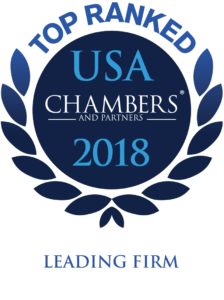Wilson Stoker, Esq.
Board Certified Labor & Employment Law Specialist
Cokinos | Young
View Bio
Construction contractors and subcontractors that hold a federal construction contract or subcontract for $10,000 or more have certain specific affirmative action requirements under federal law. When entering into a federal contract or subcontract, construction contractors agree to affirmative action obligations with regard to females, minorities, individuals with disabilities and veterans. Uniquely, construction contractors must take specific affirmative actions to ensure equal employment opportunities in recruitment, training, policies and record-keeping. Compliance is measured by the contractor’s good faith efforts to achieve results – not the actual results.
A federal contract that triggers these obligations will likely have an EEO clause, Notice of Requirement for Affirmative Action, and EEO Contract Specification. It is, however, not always clear and many times contractors are unaware of these statutory obligations until it is too late, and an audit has been initiated by the government. Even contractors that are aware of these obligations are sometimes caught off guard regarding the particular obligations created when entering a federal construction contract. For instance, companies with multiple facilities require an Affirmative Action Program (“AAP”) for each physical location with 50 or more employees, even if only one site holds a federal contract. Thus, if a company has one federal contract it must meet these obligations company-wide.
As discussed below, there are potential severe consequences for a contractor if it does not meet its obligations –including losing its federal contracts. Accordingly, if a contractor does not know whether it is a federal contractor covered by these rigorous regulations or what legal obligations it has, it should contact an employment lawyer with experience in this specialized area of law.
SUMMARY OF APPLICABLE LAWS
- Executive Order 11246 – Females & Minorities
Executive Order 11246 prohibits federal contractors and federally–assisted construction contractors and subcontractors from discriminating in employment decisions on the basis of race, color, religion, sex, sexual orientation, gender identity or national origin. The Executive Order also requires government contractors to take affirmative action to ensure that equal opportunity is provided in all aspects of their employment. Executive Order 11246 applies to all contractors and subcontractors holding federal and federally-assisted construction contracts exceeding $10,000.
- Section 503 – Individuals With Disabilities
Section 503 of the Rehabilitation Act of 1973 requires affirmative action for qualified individuals with disabilities for all federal contracts over $10,000. Section 503 prohibits federal contractors and subcontractors from discriminating in employment against individuals with disabilities, and requires these employers to take affirmative action to recruit, hire, promote, and retain individuals with disabilities. Section 503 also stipulates that contractors and subcontractors who hold contracts over $50,000 or who have 50 or more employees must develop and maintain a written Affirmative Action Program.
The Vietnam Era Veterans’ Readjustment Assistance Act (“VEVRAA”) requires that federal construction contractors and subcontractors take affirmative action to employ and advance in employment qualified covered veterans. VEVRAA requires contractors and subcontractors to list their employment openings with the appropriate employment service, and, in some instances, veterans must receive priority in referral to job openings. Further, contractors must submit an annual report on the number of current employees who are covered veterans. Covered contractors and subcontractors with 50 or more employees must develop and maintain a written VEVRAA Affirmative Action Program.
Sixteen Good Faith Effort Requirements
For Federal Construction Contractors
These laws are governed by the Office of Federal Contract Compliance Programs (“OFCCP”), a division of the U.S. Department of Labor. If audited, the OFCCP will request documentation from the contractor demonstrating good faith efforts towards compliance with the sixteen steps under Executive Order 11246, as amended, Section 503, as amended, and VEVRAA. Contractors should make “efforts fully, and shall implement affirmative action steps at least as extensive as the following” sixteen record-keeping and recruiting requirements:
- Harassment Free Sites 41 CFR 60-4.3(a)(7)(a)
“Ensure and maintain a working environment free of harassment, intimidation, and coercion at all sites, and in all facilities at which the Contractor’s employees are assigned to work. The Contractor, where possible, will assign two or more women to each construction project. The Contractor shall specifically ensure that all foremen, superintendents, and other on-site supervisory personnel are aware of and carry out the Contractor’s obligation to maintain such a working environment, with specific attention to minority or female individuals working at such sites or in such facilities.”
- Identify Recruitment Sources 41 CFR 60-4.3(a)(7)(b)
“Establish and maintain a current list of minority and female recruitment sources, provide written notification to minority and female recruitment sources and to community organizations when the Contractor or its unions have employment opportunities available, and maintain a record of the organizations’ responses.”
- Track Applicants41 CFR 60-4.3(a)(7)(c)
“Maintain a current file of the names, addresses and telephone numbers of each minority and female off-the-street applicant and minority or female referral from a union, a recruitment source or community organization and of what action was taken with respect to each such individual. If such individual was sent to the union hiring hall for referral and was not referred back to the Contractor by the union or, if referred, not employed by the Contractor, this shall be documented in the file with the reason therefor, along with whatever additional actions the Contractor may have taken.”
- Union Relationships41 CFR 60-4.3(a)(7)(d)
“Provide immediate written notification to the Director when the union or unions with which the Contractor has a collective bargaining agreement has not referred to the Contractor a minority person or woman sent by the Contractor, or when the Contractor has other information that the union referral process has impeded the Contractor’s efforts to meet its obligations.”
- Training Requirements 41 CFR 60-4.3(a)(7)(e)
“Develop on-the-job training opportunities and/or participate in training programs for the area which expressly include minorities and women, including upgrading programs and apprenticeship and trainee programs relevant to the Contractor’s employment needs, especially those programs funded or approved by the Department of Labor. The Contractor shall provide notice of these programs to the sources compiled under 7b above.”
- Internal Dissemination of EEO Policy41 CFR 60-4.3(a)(7)(f)
“Disseminate the Contractor’s EEO policy by providing notice of the policy to unions and training programs and requesting their cooperation in assisting the Contractor in meeting its EEO obligations; by including it in any policy manual and collective bargaining agreement; by publicizing it in the company newspaper, annual report, etc.; by specific review of the policy with all management personnel and with all minority and female employees at least once a year; and by posting the company EEO policy on bulletin boards accessible to all employees at each location where construction work is performed.”
- Management Training 41 CFR 60-4.3(a)(7)(g)
“Review, at least annually, the company’s EEO policy and affirmative action obligations under these specifications with all employees having any responsibility for hiring, assignment, layoff, termination or other employment decisions including specific review of these items with onsite supervisory personnel such as Superintendents, General Foremen, etc., prior to the initiation of construction work at any job site. A written record shall be made and maintained identifying the time and place of these meetings, persons attending, subject matter discussed, and disposition of the subject matter.”
- External Dissemination of Policy41 CFR 60-4.3(a)(7)(h)
“Disseminate the Contractor’s EEO policy externally by including it in any advertising in the news media, specifically including minority and female news media, and providing written notification to and discussing the Contractor’s EEO policy with other Contractors and Subcontractors with whom the Contractor does or anticipates doing business.”
- Outreach and Recruitment 41 CFR 60-4.3(a)(7)(i)
“Direct its recruitment efforts, both oral and written, to minority, female and community organizations, to schools with minority and female students and to minority and female recruitment and training organizations serving the Contractor’s recruitment area and employment needs. Not later than one month prior to the date for the acceptance of applications for apprenticeship or other training by any recruitment source, the Contractor shall send written notification to organizations such as the above, describing the openings, screening procedures, and tests to be used in the selection process.”
- Employee Referrals of Minority & Female candidates 41 CFR 60-4.3(a)(7)(j)
“Encourage present minority and female employees to recruit other minority persons and women and, where reasonable, provide after school, summer and vacation employment to minority and female youth both on the site and in other areas of a Contractor’s work force.”
- Test Validation 41 CFR 60-4.3(a)(7)(k)
“Validate all tests and other selection requirements where there is an obligation to do so under 41 CFR Part 60–3.”
- Annual Evaluation of Promotional Opportunities 41 CFR 60-4.3(a)(7)(l)
“Conduct, at least annually, an inventory and evaluation at least of all minority and female personnel for promotional opportunities and encourage these employees to seek or to prepare for, through appropriate training, etc., such opportunities.”
- Review Seniority Practices 41 CFR 60-4.3(a)(7)(m)
“Ensure that seniority practices, job classifications, work assignments and other personnel practices, do not have a discriminatory effect by continually monitoring all personnel and employment related activities to ensure that the EEO policy and the Contractor’s obligations under these specifications are being carried out.”
- Non Segregation 41 CFR 60-4.3(a)(7)(n)
“Ensure that all facilities and company activities are nonsegregated except that separate or single-user toilet and necessary changing facilities shall be provided to assure privacy between the sexes.”
- Minority & Female Subcontract Solicitation 41 CFR 60-4.3(a)(7)(o)
“Document and maintain a record of all solicitations of offers for subcontracts from minority and female construction contractors and suppliers, including circulation of solicitations to minority and female contractor associations and other business associations.”
- Annual Review of Supervisor Performance41 CFR 60-4.3(a)(7)(p)
“Conduct a review, at least annually, of all supervisors’ adherence to and performance under the Contractor’s EEO policies and affirmative action obligations.”
Additional Requirements For Construction Contractors & Subcontractors
Many times, contractors have ancillary and additional obligations that extend beyond the sixteen requirements. These obligations may include:
- Participation goals for Females & Minorities;
- Maintain federal projects list with certain items;
- Equal Pay Act and Davis Bacon Act compliance;
- Construction contract notifications to OFCCP;
- Recordkeeping obligations;
- Section 503 and VEVRAA written Affirmative Action Programs;
- EEO-1 Report;
- VETS-4212 Report.
Overview Of An OFCCP Audit
Executive Order 11246, Section 503 and VEVRAA collectively make it unlawful for contractors and subcontractors doing business with the federal government to discriminate in employment on the basis of race, color, religion, sex, sexual orientation, gender identity, national origin, disability, or status as a protected veteran. The OFCCP is responsible for enforcing these laws, and has the authority to conduct compliance audits to determine if a contractor is maintaining nondiscriminatory hiring and employment practices, as well as taking requisite affirmative action to ensure that applicants and employees are not unlawfully discriminated against.
If a contractor is selected for an OFCCP audit, the contractor will receive a letter from the OFCCP notifying it of a desk audit in which the OFCCP will review the contractors’ programs, including personnel activity, compliance efforts, and compensation data within 30 days. The OFCCP’s position is that it will notgrant extensions for “routine business reasons” and any extension granted will not exceed fifteen days.
After a desk audit, the next phase of an OFCCP investigation is an onsite audit. Many times, however, construction contractors are not provided with notice of a desk audit, and instead, the contractor may be first notified that the OFCCP is jumping directly to an onsite audit without a desk audit.
An onsite audit can last days, if not weeks. During the onsite audit, the OFCCP will interview employees, as well as management. The OFCCP will collect data and review compliance with the sixteen steps outlined above.
Penalties For Non-Compliance
If the OFCCP determines, after a compliance audit, that the contractor or subcontractor did not meet its obligations, severe punitive sanctions and penalties can be imposed, as well as potential civil and criminal liabilities. Among the penalties for non-compliance are the following:
- Contract may be canceled, terminated, or suspended in whole or in part;
- Ineligibility for any future government contracts;
- OFCCP may sue for discrimination as a result of a missing or deficient affirmation action program;
- Where a violation is material, the Department of Justice (“DOJ”) may bring suit to enforce the regulations or enjoin noncompliance. The DOJ is also authorized to bring a criminal action for the furnishing of false information to DOL.
Takeaways
Construction contractors with federal contracts should review their contracts to determine if they may be covered and have statutory affirmative action obligations. If so, contractors should be proactive and take the necessary steps immediately – contractors will not be able to adequately prepare the necessary AAP information and data after the initial audit notice is received from the OFCCP. Additionally, contractors should conduct periodic self-audits to gauge exposure related to affirmative action.
About The Author
Wilson Stoker is an employment law counselor who is Board Certified in Labor and Employment Law by the Texas Board of Legal Specialization. Wilson has particular experience assisting government contractors with all aspects of OFCCP affirmative action compliance including developing and maintaining affirmative action plans and defending employers in DOL and OFCCP audits. View bio.









Recent Comments